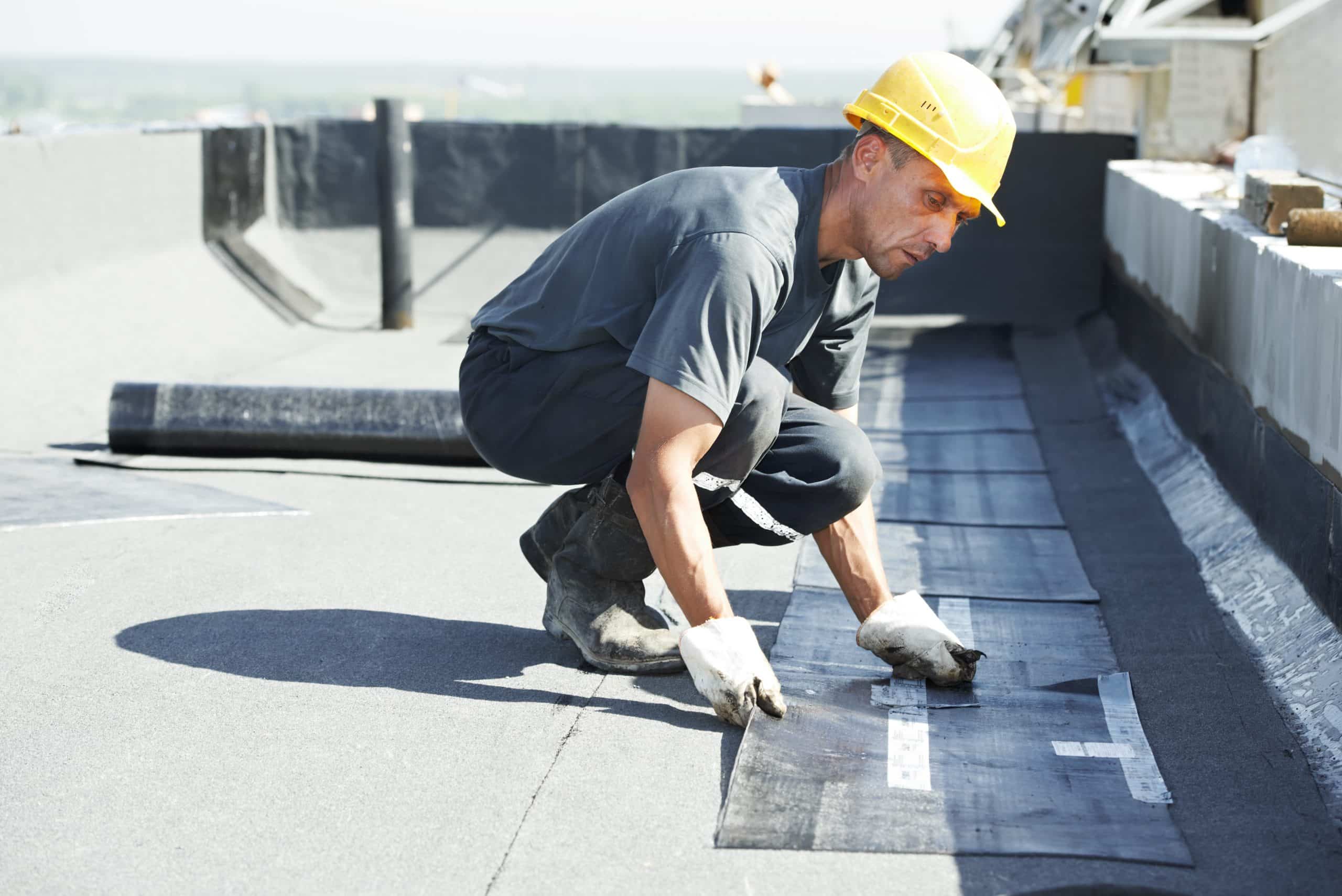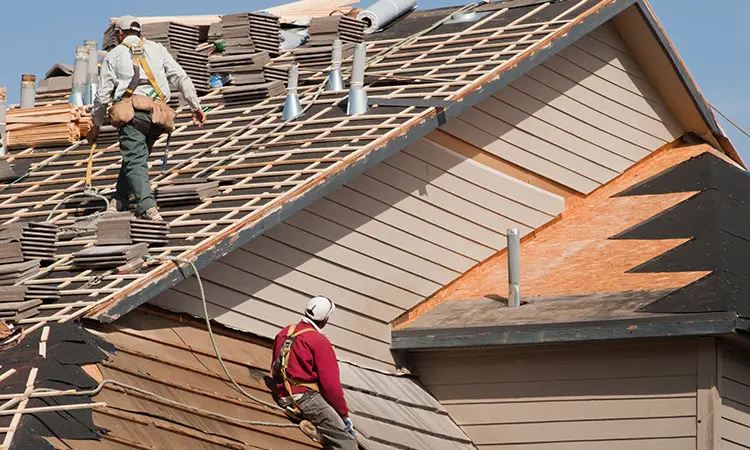Roofing Companies Oahu: Premier Roofers for All Roofing Projects
Understanding the Different Sorts Of Roof Coverings: A Comprehensive Guide for Homeowners
In the world of homeownership, choosing the proper roof design is a choice that lugs considerable effects for both functionality and aesthetic allure. With an array of choices-- varying from the typical gable to the contemporary level-- each type offers one-of-a-kind benefits and obstacles that must straighten with the homeowner's specific needs and ecological factors to consider. Comprehending these differences not just aids in making an educated selection however also affects lasting maintenance and power efficiency. As we check out the complexities of different roofing system kinds, it becomes obvious that one dimension does not fit all; the right choice may surprise you.
Gable Roofing Systems
Saddleback roofs, characterized by their triangular form, are among one of the most popular roof covering styles because of their simplicity and efficiency in dropping water and snow. This layout includes 2 sloping sides that satisfy at a ridge, enabling reliable water drainage and reducing the threat of water accumulation. The steep pitch frequently associated with saddleback roofs enhances their ability to manage hefty precipitation, making them appropriate for various climates.
Along with their useful benefits, saddleback roofs use aesthetic adaptability. They can be adapted to different building styles, from standard to modern homes. The style can also accommodate extra features such as dormer windows, which improve all-natural light and ventilation in the attic area.
Moreover, gable roof coverings supply adequate room for insulation, contributing to power effectiveness. House owners can pick from a variety of roofing materials, including asphalt shingles, metal, and floor tiles, better enhancing personalization options.
Regardless of their benefits, saddleback roofs might require added support in locations vulnerable to high winds or heavy snowfall. On the whole, the gable roof covering stays a favored choice because of its mix of capability, resilience, and aesthetic charm.
Flat Roofs
Flat roofings are typically identified for their minimal style and functional applications, particularly in industrial and business settings (oahu roofing). These roofs include a nearly straight or straight surface area, which permits very easy construction and functional space utilization. While they may lack the visual allure of angled roofs, flat roofing systems supply numerous advantages, especially in urban settings where making best use of space is essential
Among the main advantages of flat roof coverings is their ease of access. Homeowners can utilize the roof space for numerous functions, such as rooftop yards, balconies, or photovoltaic panel installments. Furthermore, level roofs are usually much more economical to preserve and install compared to their sloped equivalents, as they need less materials and labor.
Nevertheless, level roofings do present particular obstacles. Correct drainage is necessary to prevent water merging, which can lead to leakages and architectural damage. Therefore, picking top notch waterproofing materials and routine inspections are critical for making certain durability. Common products utilized for level roofing systems include built-up roofing (BUR), modified asphalt, and single-ply membranes, each offering unique advantages. In general, level roof coverings serve as a useful and adaptable choice for several property owners and services alike.
Hip Roofs
Hip roof coverings are characterized by their sloped sides that merge at the top, developing a ridge. This layout is distinctive from gable roofing systems, as all four sides of a hip roofing system incline downwards towards the wall surfaces, providing an extra steady framework. The angle of the slopes can vary, enabling for adaptability in architectural aesthetic appeals and performance.
One of the primary advantages of hip roofs is their ability to stand up to hefty winds and negative climate problems. The sloped next page surface areas enable better water drainage, reducing the danger of leaks and water damages. Additionally, hip roofing systems supply enhanced attic area, which can be used for storage or perhaps exchanged habitable areas.
Nonetheless, building a hip roof can be much more pricey and complicated than less complex roof types, such as gable roofs. The extra product and labor associated with creating the slopes and making sure proper structural honesty can bring about greater expenses. Despite these drawbacks, lots of house owners favor hip roofings for their toughness, visual appeal, and capacity for energy efficiency.
Mansard Roofing Systems
Mansard roofing systems, often acknowledged by their unique four-sided layout, function 2 inclines on each side, with the lower slope being steeper than the top. This building style, stemming from France in the 17th century, is not just cosmetically appealing yet practical, as it optimizes the usable room in the top floors of a structure. The high reduced incline permits for more headroom, making it an optimal choice for attics or loft spaces, which can be converted right into living spaces.
Mansard roofing systems are identified by their adaptability, suiting various architectural designs, from typical to modern-day. They can be constructed with different products, including asphalt shingles, slate, or metal, giving property owners with helpful site a variety of alternatives to suit their spending plans and preferences. In addition, the design enables for the assimilation of dormer home windows, boosting natural light and ventilation in the upper levels.
However, it is important to think about the possible drawbacks. Mansard roofs may need more maintenance due to the intricacy of their layout, and their steep slopes can be challenging for snow and rainfall runoff. On the whole, mansard roofing systems integrate style with practicality, making them a prominent option among homeowners seeking distinct architectural features.
Dropped Roofings
As home owners progressively look for simplicity and performance in their architectural designs, lost roofs have emerged as a prominent option. Characterized by a single sloping aircraft, a shed roofing system offers a minimalist visual that enhances various home designs, from contemporary to rustic.
One of the primary benefits of a shed roofing is its straightforward building and construction, which often translates to lower labor and product expenses. This style enables reliable water drain, reducing the danger of leakages and water damages. Furthermore, i was reading this the upright slope provides ample area for skylights, improving natural light within the inside.
Lost roofings likewise supply convenience in regards to use. They can be successfully incorporated into additions, garages, or outside structures like sheds and pavilions. In addition, this roof design can accommodate various roofing products, including metal, asphalt roof shingles, or even green roof coverings, lining up with green campaigns.
Nonetheless, it is important to think about regional climate conditions, as hefty snow tons may necessitate adjustments to the roof covering's angle or structure. On the whole, lost roof coverings present a practical and visually pleasing alternative for house owners seeking to optimize functionality without endangering style.
Conclusion


Gable roofs, identified by their triangular shape, are among the most popular roofing styles due to their simpleness and efficiency in losing water and snow. oahu roofing. The steep pitch frequently associated with gable roofing systems enhances their capacity to manage heavy rainfall, making them suitable for various environments
While they might do not have the aesthetic charm of pitched roofs, level roofings use numerous benefits, specifically in urban settings where making the most of space is critical.
